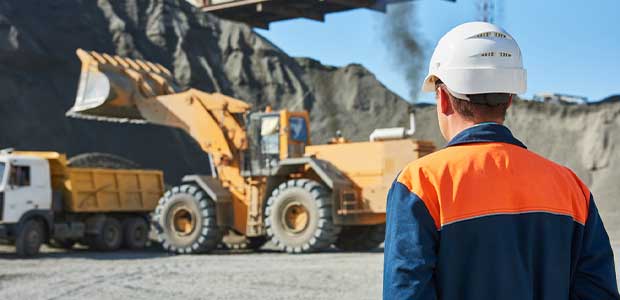
Preventing Silicosis in the Mining Industry
Silicosis can cause difficulty breathing and lead to other medical issues. Learn what practices the Mine Safety and Health Administration recommends to protect workers.
- By Alex Saurman
- Oct 26, 2022
The Mine Safety and Health Administration (MSHA) recently published an alert on protecting workers in the mining industry from the dangers of respirable crystalline silica.
Workers can be exposed to this very small-sized type of silica from “cutting, sawing, grinding, drilling, and crushing stone, rock, concrete, brick, block, and mortar,” OSHA said. When these particles are breathed in, workers can be at risk for diseases like silicosis. Silicosis not only can lead to difficulty breathing, caused by scar tissue, but can also lead to lung cancer, kidney disease and other medical issues.
To reduce the risk for workers, MSHA recommends four best practices.
- “Perform air monitoring of worksites.” Air monitoring can give employees and employers the information they need to make decisions about more practices and respiratory protection, MSHA says.
- “Install and maintain engineering controls to reduce the amount of silica in the air.” There are multiple engineering controls that can be addressed, including “exhaust ventilation,” “water sprays” and “wet drilling or suppression.”
- “Administrative controls are the second line of defense for minimizing silica exposures.” Controls like housekeeping and training are just a few ways to reduce worker exposure to this hazard.
- “Provide miners with appropriately selected, properly fitted and NIOSH approved respirators, as engineering controls are installed or updated.” MSHA specifies that these respirators must be “kept clean and properly maintained.”
Resources
To learn more about these practices, read the Respirable Crystalline Silica – Safety and Health Alert from MSHA.
The National Institute for Occupational Safety and Health has Dust Control Handbooks for Coal Mining and Metal/Nonmetal Mining.
Want to learn more about silicosis and respiratory protection? Listen to OH&S SafetyPod episode "Understanding Silicosis & Finding the Proper Respiratory Protection."
About the Author
Alex Saurman is a former Content Editor for Occupational Health & Safety,who has since joined OH&S’s client services team. She continues to work closely with OH&S’s editorial team and contributes to the magazine.